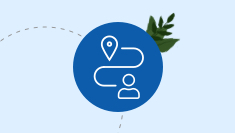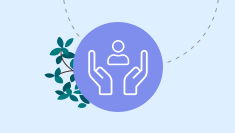Chapter 3: How You Engage Customers
You can’t simply translate your old processes into digital.
Your business practices are your company’s habits — repeatable behaviors that enable you to scale effectively. In a product-centric world, these business practices optimize how you manufacture, market, sell, and service your products. In a customer-centric world, you still need to do all of that, but you also have to think about those activities from the customer’s perspective.
Redesigning business processes to be customer-centric means moving away from seeing your business as selling to seeing it as serving. It means leveraging customer insights to deliver more personalized experiences, including tailored recommendations. It also means streamlining customer touchpoints to increase speed and reduce effort.
The only way to deliver excellent experiences is to enable employees at every stage of the customer’s journey. For example, reducing the number of steps in a transaction could be the start of a journey toward making that whole transaction invisible.
Consider the way Uber redesigned the entire experience of getting a cab. They looked at every area of friction and simply removed it. No standing in the rain hailing a cab, no waiting to exit your ride to pay. At the same time, they made it easy for drivers to find riders. This combination of improved customer and workforce experience revolutionized an industry.
Your goal: Make it easy for employees to make it easy for the customer.
Well-designed customer experiences have never been more relevant. Here’s the evidence, according to research:
- Salespeople — once solely focused on closing transactions — now track customer satisfaction more than any other metric.
- The majority (88%) of high-performing marketers say they lead customer experience initiatives across their organizations.
- Even leaders in information technology (IT) now cite customer experience as their top priority.
Redesigning business processes to be customer-centric means moving away from seeing your business as selling to seeing it as serving. It means leveraging customer insights to deliver more personalized experiences, including tailored recommendations. It also means streamlining customer touchpoints to increase speed and reduce effort.
The only way to deliver excellent experiences is to enable employees at every stage of the customer’s journey. For example, reducing the number of steps in a transaction could be the start of a journey toward making that whole transaction invisible.
Consider the way Uber redesigned the entire experience of getting a cab. They looked at every area of friction and simply removed it. No standing in the rain hailing a cab, no waiting to exit your ride to pay. At the same time, they made it easy for drivers to find riders. This combination of improved customer and workforce experience revolutionized an industry.


The heightened stakes for customer expectations mean you have to solve for customers’ “job to be done” in every moment. According to Harvard Business Review, your customer’s job to be done is “the progress that the customer is trying to make in a given circumstance — what the customer hopes to accomplish.”
By defining your customers’ jobs to be done, you’ll be in a better place to meet their needs and reconfigure your business practices to respond to their demands. This way, you’re staying focused on them, rather than your own products.
This helps you develop a holistic view of the customer and how they’re using your products and services to solve real challenges in their lives. Invest time in learning who your customers are and why they behave as they do.
Speak to your customers, and they’ll surely give you an example of an inconvenient or clunky touchpoint with your company. Bring together stakeholders from all of the teams that influence that moment to explore how you might fix it. For now, focus on that single touchpoint and the teams and time frames needed to address it.
For example, why should customers have to call you if there is an issue? Can you identify the issue and proactively engage to solve it? With the right data and processes in place, your airline could move you from a cancelled flight to an alternative before you even know it’s cancelled.
Put yourself in your customer’s shoes and imagine what they need, when, and why. Find a way of making it effortless for them to get what they need.
- Identify target personas and their unique behaviors.
- Designate a group of experts to deeply understand the needs of users in order to inform products, marketing and processes. Divide your customer base into smaller persona groups to help you tailor messaging, product development, and relationship management.
- Create a journey map for each persona, outlining the job to be done at each stage of the experience.
- Enable the full power of your company.
- Enable one team to serve the customer through a single source of truth and customer journeys.
- Ensure consistent tracking of each interaction between you and your customers.
- Use that data to inform a short- and long-term roadmap of products and features.
- Optimize to deliver personalized customer journeys at scale.
- Develop a plan that uses cross-channel communication to engage your customers.
- Give everyone in the company exposure to customer interactions as well as opportunities to interact with customers directly.
- Integrate data points so you have a full picture of customer experiences.
Chapters
Related Content

Blog Post
What does Salesforce do?

Video
How Ford Plans to Transform an Icon

Report
How to Launch an Employee Experience Platform
More Resources

State of the Connected Customer

Create your Customer 360 in two simple steps.







